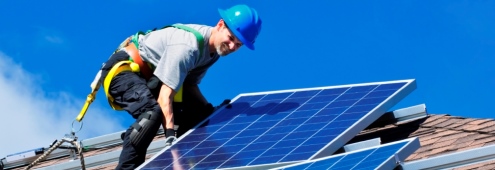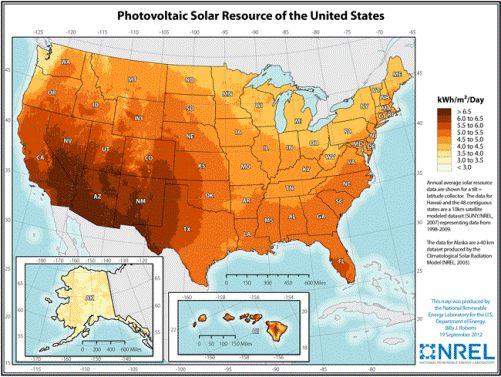
Solar panel installation
How Many Home Solar Panels Do I Need
The smart electricity consumers of today are realizing the advantages of installing home solar power systems to save money and the environment by taking advantage of the free energy provided by the sun. Homeowners are able to save up 50% and more over their current energy costs by installing photovoltaic solar arrays on their home.
One of the first questions we are asked, when someone starts down the road to energy independence, is “How big of a solar system do I need?” There is no pat answer to this question because of the variables involved in home solar power. However, we can tell you a few of the important things that, when combined, will determine the best size of solar energy system to fit your needs now and into the future.
Please bear in mind that the information below is based on some very general assumptions, for exact sizing requirements our expert solar consultants are standing by to provide you with accurate information completely free of charge or obligation.
Step #1 Determine how much power do you currently use. This can be determined by reviewing you power bills for the last year. Simply add up the kilowatt hours (kwh) then divide the total by 12, that will give you a monthly average. Then divide that number by 30 to arrive at your daily average khw energy usage. It is important that you start with a yearly average for a more accurate assessment. Also you will need to look into a crystal ball to a certain extent, solar panels last at least 20 years will your energy needs increase or decrease in that period of time? A growing family, adding a home addition or installing a pool are a few examples of things that could increase your energy needs over time.
Step #2 – What percentage of your home electrical needs do you want to generate from solar. Multiply that percentage by your average daily usage and convert that number to watts. Your energy bill is based on kwh and solar panel output is measured in watts. The power P in watts (W) is equal to 1000 times the energy E in kilowatt-hour (kWh), divided by the time period t in hours (hr):
P(W) = 1000 × E(kWh) / t(hr)
Step #3 Determine the peak hours of sun in your area, use this handy map to help you determine the peak hours of sun in your immediate area. Again this is just an average but is fairly accurate, while some climates are more cloudy or foggy than others solar power still works as along as the panels are not in direct shade from trees, other buildings etc.
Step #4 The efficiency or output of the solar panels you install combined with the average peak hours of sun will then determine the number of panels required to meet your needs. Solar panels on the market today have an average nameplate rating of 275 watts. A nameplate rating is a unit of measure determined in a laboratory under perfect conditions. In real life, your home solar system will only meet ideal conditions more just moments at a time. In real life you can only expect approximately 15% of those 275 watts to be turned into usable electricity.
By gathering all the information above and doing all the calculations you will be able to determine approximately the number of solar panels you will need to install on your home. Again this is just a very rough way for those of you that like to figure stuff out on your own and not meant to be used in any way other than informational reasons. In other words do not use this formula to order solar panels for a “do-it-yourself” home solar project!
Luckily for you, our expert solar consultants are prepared to use your zip code and some other very basic information coupled with state of the art satellite imagery and software to prepare an accurate quote that includes the size of you system as well as all costs and savings at absolutely no charge to you. It is much easier and way more accurate than what has been outlined above and there is no obligation.
